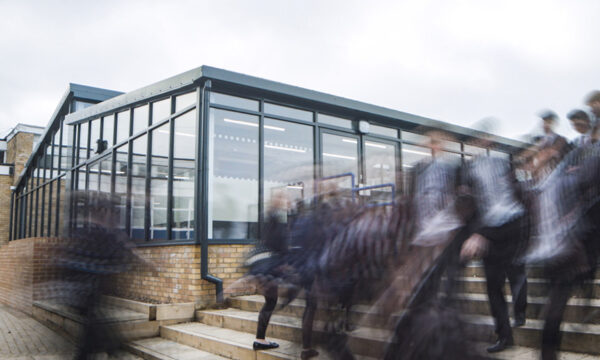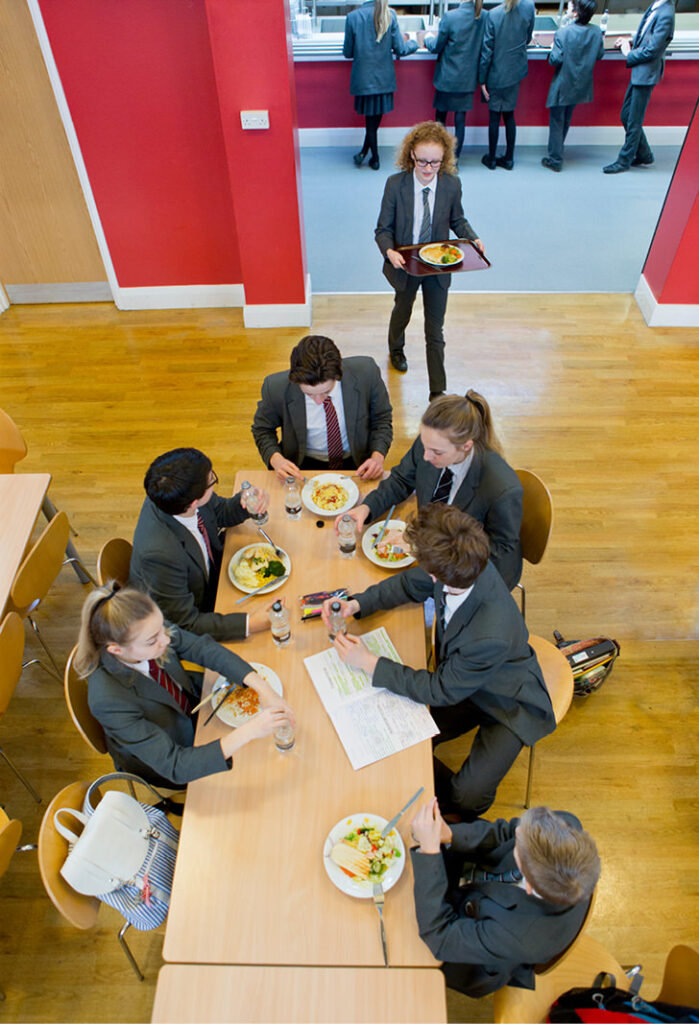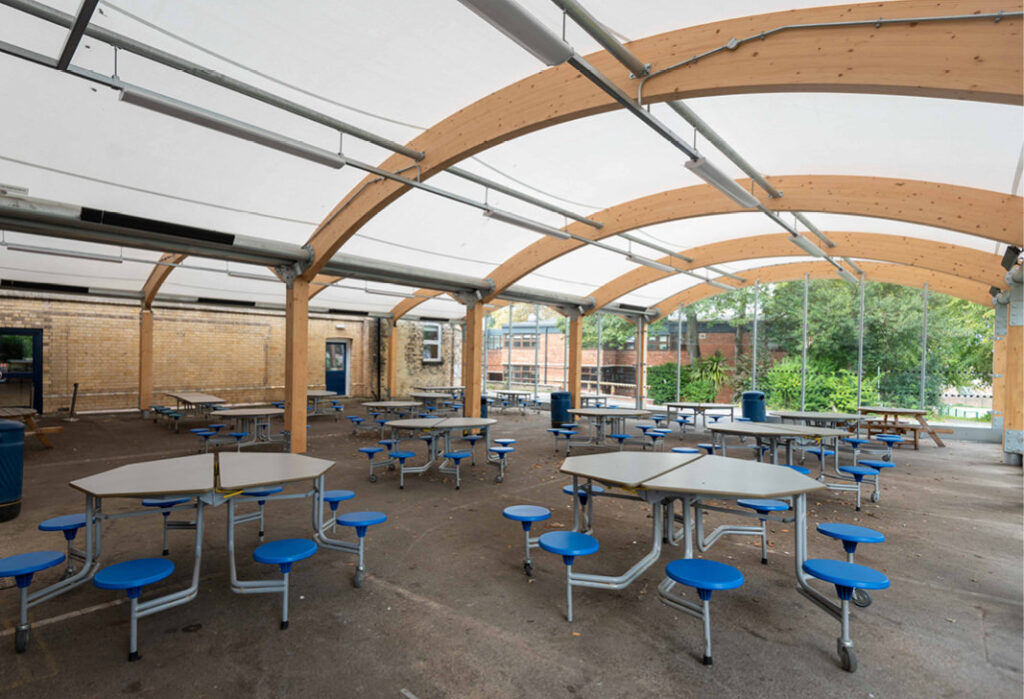
Canopies & Walkways
- All Canopies & Walkways
- Fabric Canopies
-
Polycarbonate Roof
Canopies - Covered Walkways
- Enclosed Canopies
- MUGA Canopies
- Timber Canopies
- Entrance Canopies

Meeting Pupil Needs at Lunchtime
In May 2025, School Surveys published ‘The Lunchtime Listen: Helping Schools Improve Lunchtimes Through Pupil Voice’; findings from one of the UK’s most extensive pupil voice research projects, detailing how pupils in UK primary and secondary schools feel about their school lunchtime.

When asked which activities they most enjoyed at school during free time, 81% of pupils chose “chatting with friends”, well above sport, clubs or reading. Social time matters and pupils were clear about what they look for from lunchtime; more calm, more space and less noise.
How we provide this across schools in the UK, where much of the education building stock was built almost fifty years ago, presents a challenge. In 2023, the National Audit Office estimated that 60 per cent of educational building stock was constructed before 1976. Population increase has resulted in a systemic lack of space in schools, meaning that the calm, room and quiet that pupils have voiced as important, is often logistically, hard to achieve.
In many schools, it is not uncommon during the ‘lunch hour’ (sometimes considerably less than an hour), for hundreds, even thousands, of pupils to be moving together into crowded spaces for queuing, collecting meals or eating.
The School Survey introduction details a young teacher’s perception of lunch in a typical UK secondary school. “Lunchtime – only 25 minutes long? Half the school expected to go through the canteen in first break at 10.30am? The entire school day done and dusted by 2.35pm? … Getting over 1,000 children fed was logistically challenging, the playground was very hard to manage, fights could be minimised this way. Essentially, it was in our interests to keep it tight and send them off site as soon as possible.”
While anecdotal, nothing about this experience suggests calm, space or quiet. Reimagining and redesigning this time and space is therefore vital in meeting pupils needs.
47% of pupils in the study wanted quieter spaces to eat. This was especially true in secondary schools, where crowded dining halls, lengthy queues and short breaks leave little time for relaxed interaction in a quiet area. Multiple reports detail children queuing for their entire lunch break and food running out by the time they reach the front. Among secondary pupils, 57% reported a lack of seats at lunchtime.
Streetspace worked with Beamont Collegiate Academy in Warrington where school leaders expressed that the usually calm and orderly environment was hitting a snag every lunchtime as a result of overcrowding in an inefficiently designed space.
Principal, Gareth Harris, explained, “we had too many children (approx. 900), to put it bluntly, standing up trying to eat a jacket potato…”
The overcrowding at Beamont was creating a rushed and intense lunch experience for too many children, something that needed to change. Streetspace worked with leaders to understand pain points and needs, installing a 200m2 glazed extension to the existing dining hall, along with contemporary furniture, which transformed the lunchtime offer. You can read about the project in full, here.
For many schools, the ideal dining solution may look quite different to their existing set up. Traditional seated dining, grab-and-go options to take to a quieter or more spacious area, or casual bar stools and standing areas all suit different pupil and school needs. The ‘Improving the Dining Experience in Schools’ report notes, “there is no simple solution and no ‘one size fits all’. One school’s noisy atmosphere is another’s happening buzz. Round tables may work in one school, while tall stools may be the solution in another.”
With this in mind, many schools are reconsidering how their current offer looks, feels and utilises each square foot available. Expert advice during this stage is vital.
Pupil voice from the Lunchtime Listen report also revealed that pupils who do not take part in clubs or structured activities during the school lunchbreak still value space to simply socialise or sit quietly. In this context, the quality of dining and social environments becomes crucial, not just in terms of supervision, but in providing the right mix of space and atmosphere.

The Streetspace team have long been advocates of outdoor space as a cost-effective way of creating healthy social spaces that can be used in all weathers, perfect for ‘zoning’ available space to suit a wide range of pupil needs.
‘The Good School Playground Guide’ explains that a variety of spaces and possibilities is a key principle in any good design. Young people thrive in a varied habitat that provides a range of different niches and scales appropriate to their mood, gender and age; spaces to be active or quiet, social or solitary, competitive or collaborative. The guidance makes clear that these spaces need to complement each other and an overall zoning plan will provide a helpful way of ensuring balance and the right mix of spaces and opportunities.
Schools reviewing their lunchtime provision should consider whether their dining and outdoor areas offer enough flexibility to support both social activity, physical activity and quiet time. Covered outdoor spaces, improved layouts and designated calm zones will help all pupils to have happier, safer lunchtimes.